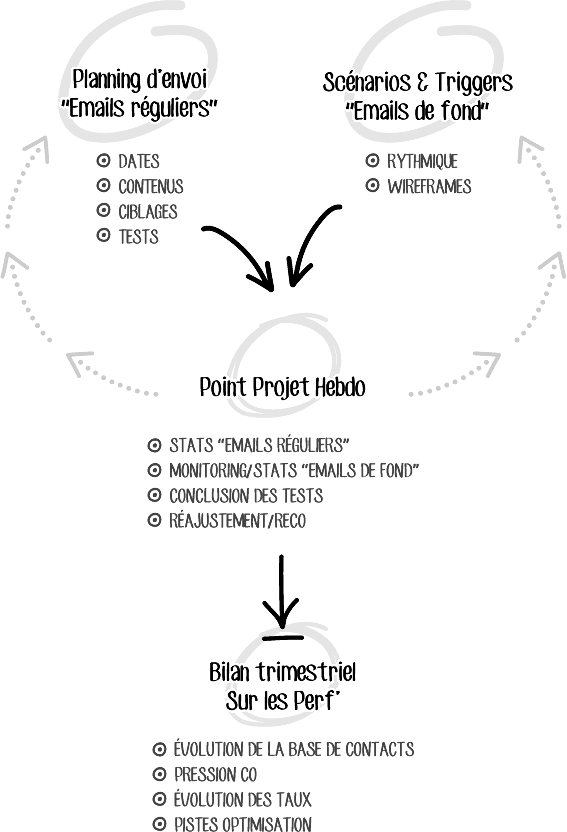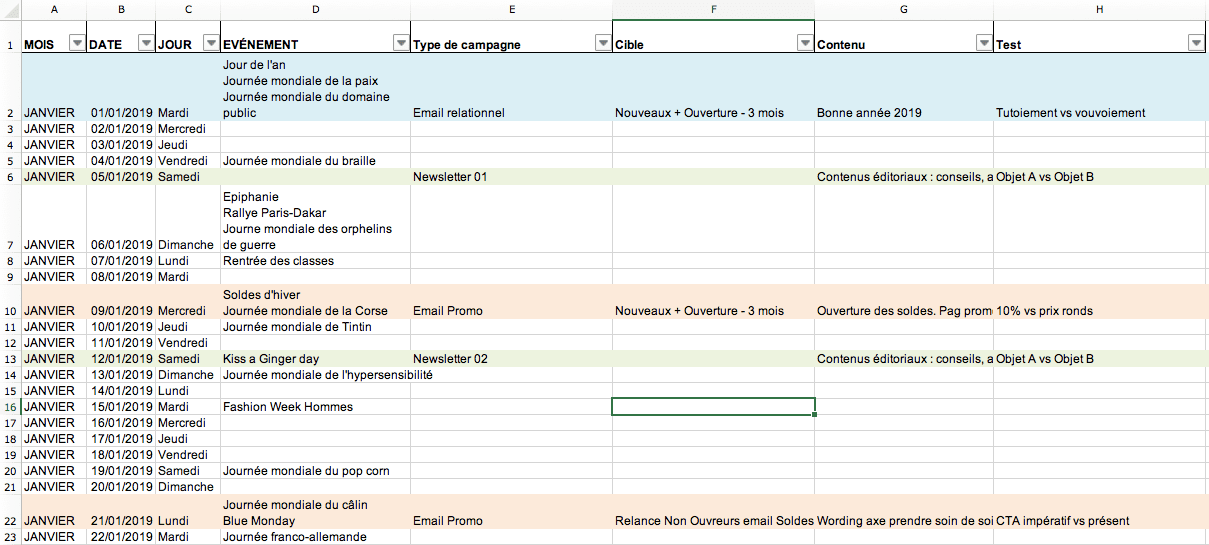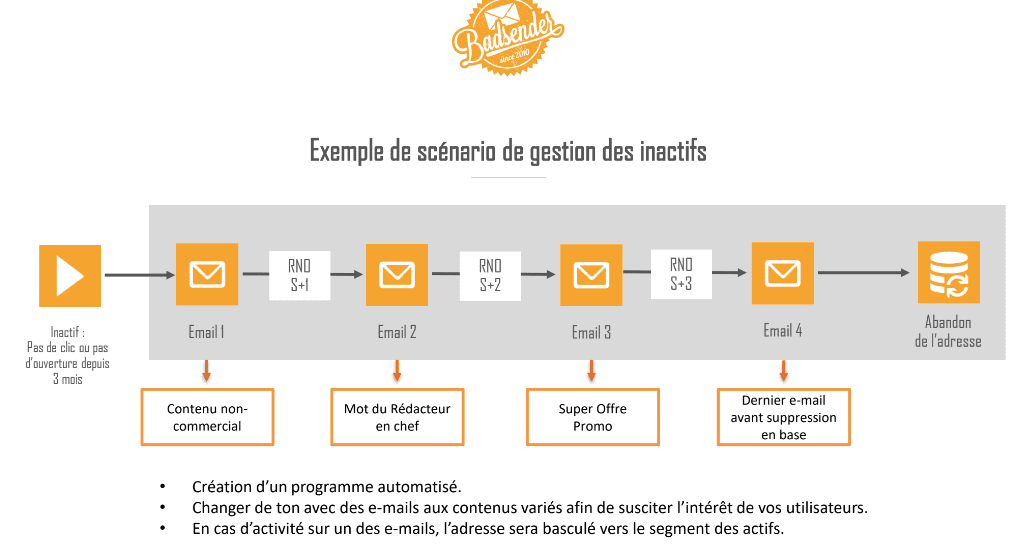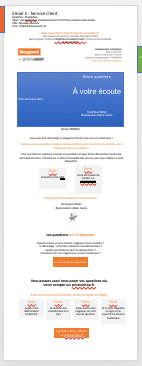At Badsender, we accompany our clients on a daily basis. We call it "strategic coaching", not because it's fashionable but because it's what we do!
We are a bit of an extension of the team on site, we are the outside view that will allow us to lift our heads from the handlebars.
From our emailing and eCRM expertise, we pass on to you all our knowledge by giving you a framework, a way of doing things and by sharing with you our point of view on the rhythm of your sendings, the stats of your campaigns, your targeting, the evolution of the volume of your contact base.
But concretely, how does it work? To begin, let's summarize with a small graph ... the explanations come later!

1. The sending schedule: regular emailings that will animate your contact base
We will define together the sending schedule of your campaigns over the next weeks (ideally over the next 3 - 6 months).
First, we will list the key events specific to your company: product launch, store opening, the 30th anniversary of your company...
Then, what are the events specific to the common calendar that also interest your company: sales, Valentine's Day, Mother's Day...
And finally, what are the "days of" that are likely to promote your business? The "world days of" are all listed here. There is even a special "world day" site. There are 504 listed! You're bound to find a few that make sense for your business. There is a day for absolutely EVERYTHING: tourism day, world parents day, world dough day, world foot health day, beer day, ... yes there is!
This type of calendar is called a marketing chestnut, there are several on the market that are downloadable, I put some links here :
The "days of" are quite effective when you want to break the monotony of the contents! They bring originality and allow you to give rhythm to your mailings.
For example, the sales usually last 6 weeks. We can quickly find ourselves with a sales email per week that repeats itself. Whereas if we are inspired by the "days of", we can punctuate the content with an email on the opening of the sales, a hug day email, a Candlemas email, a Valentine's Day email, etc. ... it allows to dynamize the content.
At the same time as the sending schedule, we define a test schedule. In emailng, we can (we must!) test everything: the personalization or not in the subject, the first name vs. the last name, the imperative or the present tense, the sending hours, the sending days, the word Sales or not, the emoticon or not, the animated gif or not, the hierarchy of the blocks of an email...
So in the same Excel document, we arrive at a schedule like this:
Need help?
Reading content isn't everything. The best way is to talk to us.

2 - Weekly project update
Every week, we make a report of the last sent campaigns. We especially look at the stats of the last campaigns sent:
- Deliverability rate
- Unique opening rate
- Global unique click-through rate vs. satisfied clicks
- Churn rate
- Dissatisfaction rate: This is THE rate I love! It allows you to see if your campaign was appreciated or not by your recipients. It's the number of unsubscribes over the number of clicks in your campaign. But if you want to know more about this magical rate, go and see here, a great article specially designed on this rate ! (That's how magical it is!)
We draw conclusions on the tests performed. We adjust the targeting if necessary for the next times. In short, we debrief and readjust!
3 - Triggers and "background" scenarios
For all "background" emails, i.e. triggers or scenarios that are not likely to change in the next 6-12 months, we discuss them in parallel with the sending schedule.
Based on the customer lifecycle (which may or may not have been worked on beforehand in an eCRM workshop, for example), we define together the triggers, the number of emails and the rhythm, the targets and the content.
First, we validate the overall mechanics. That is, a nice scheme like this:

Then, we validate wireframes of this style:

And then, Badsender's production team can take over the design, integration and implementation of emails in the campaign management tool.
Of course, once the implementation is done, we monitor once or several times a week the statistics to make sure that the scenario or the trigger is running well!
4 - The quarterly report to measure performance
Every three months, we organize a 2-hour meeting. This is an opportunity to take a step back and see how the strategy adopted in advance has evolved over time, from one quarter to the next.
This is the subject of a power point with lots of figures! Do open rates and satisfied clicks continue to grow? Are unsubscribe and dissatisfaction rates still decreasing? Are the number of opt-in contacts evolving at a good pace? What are the results of the tests? Are the objectives set last quarter being met? What adjustments need to be made? What are the other ways to optimize to go even further?
A MUST!